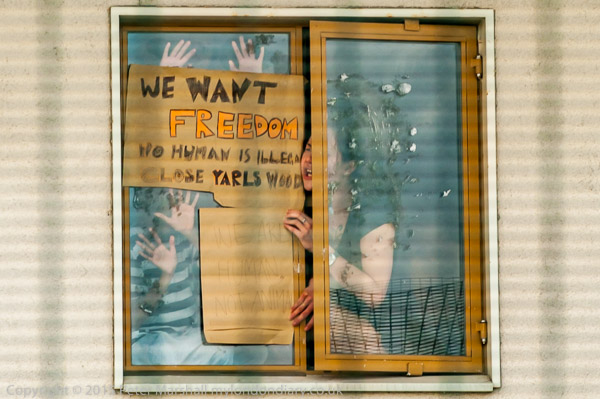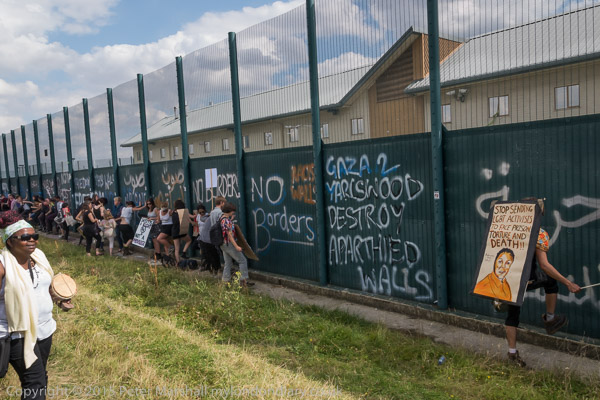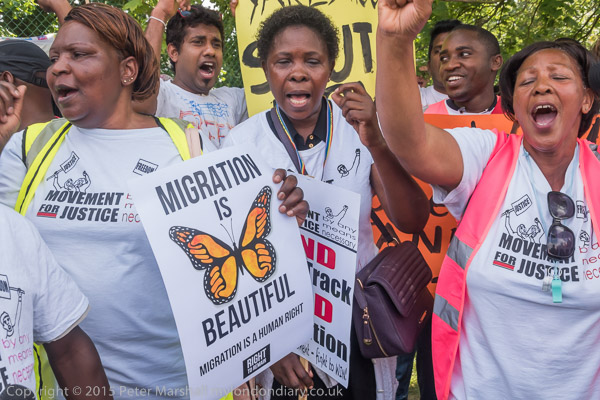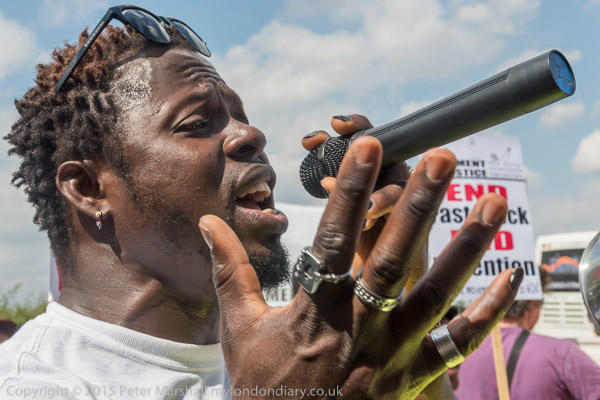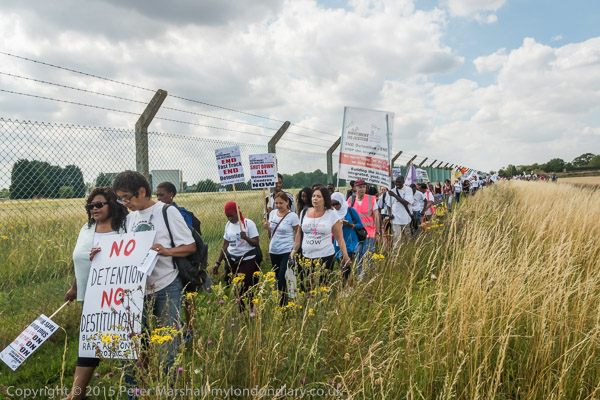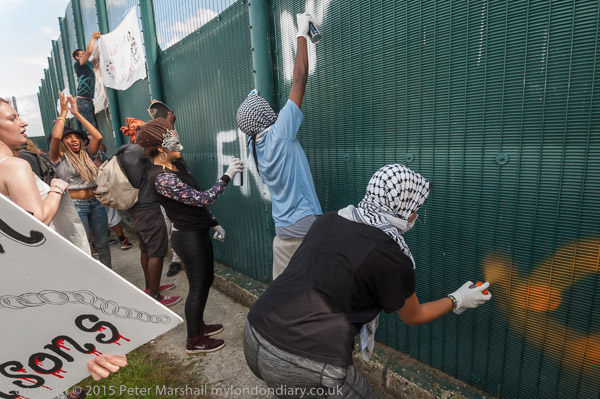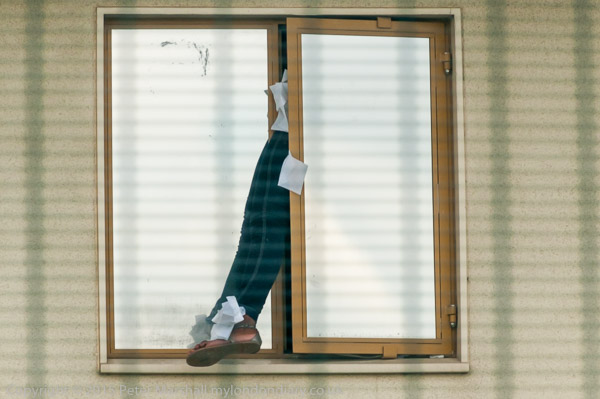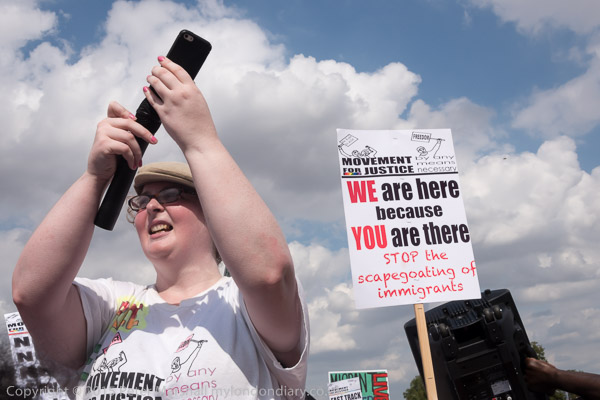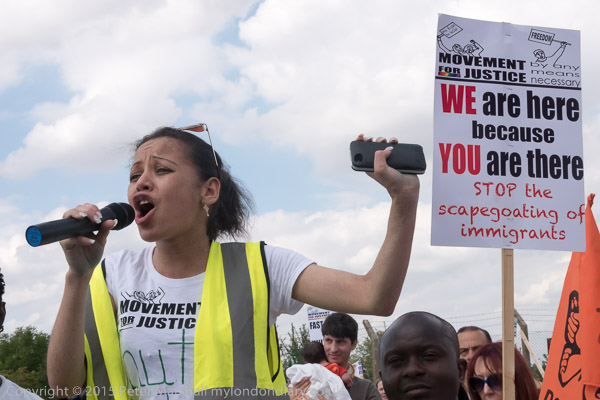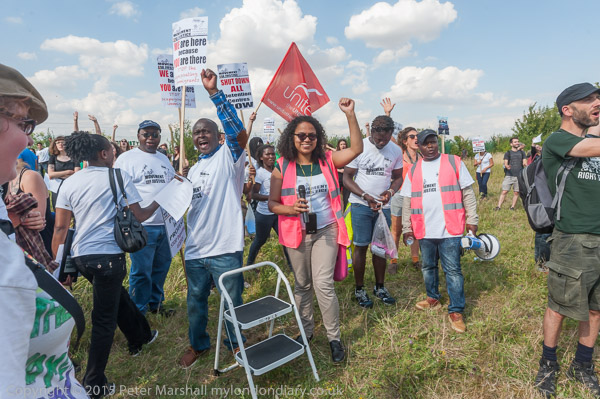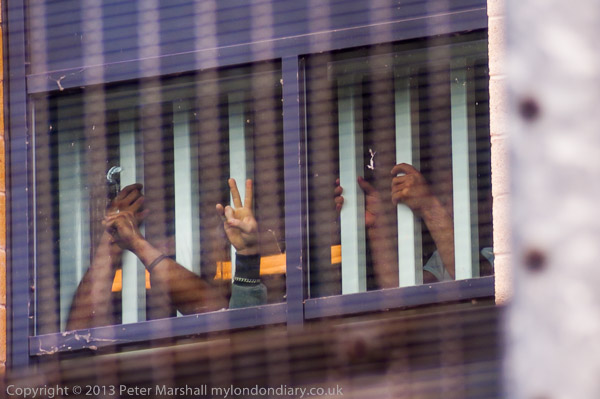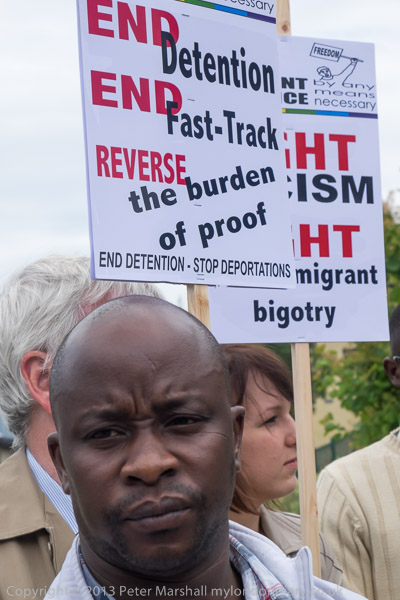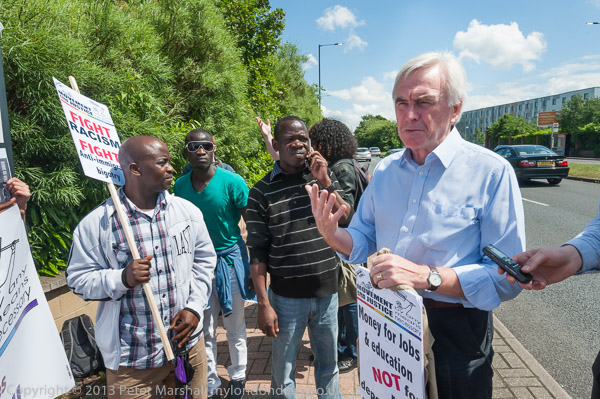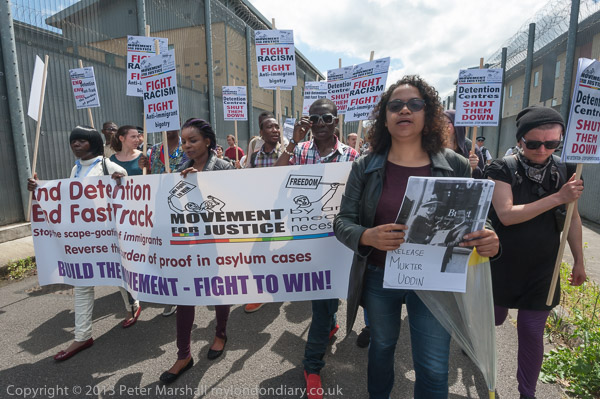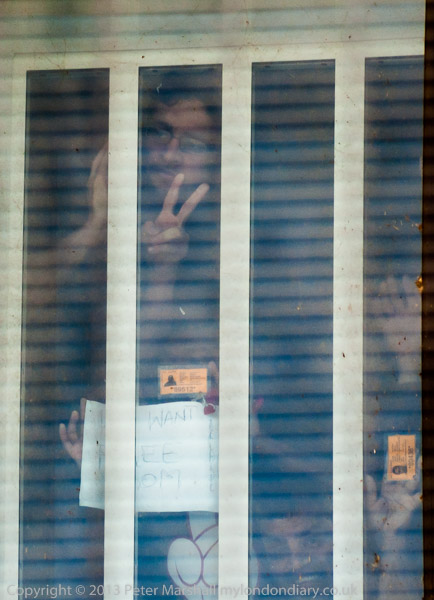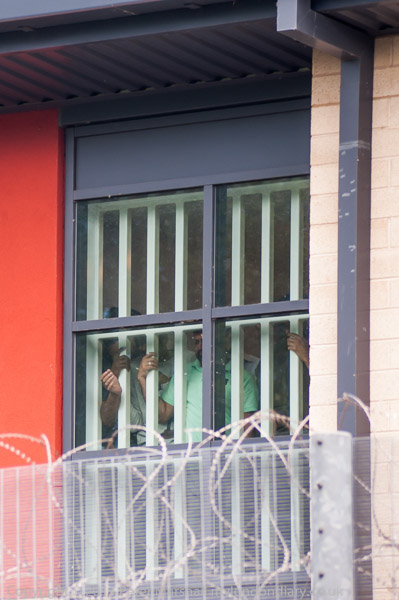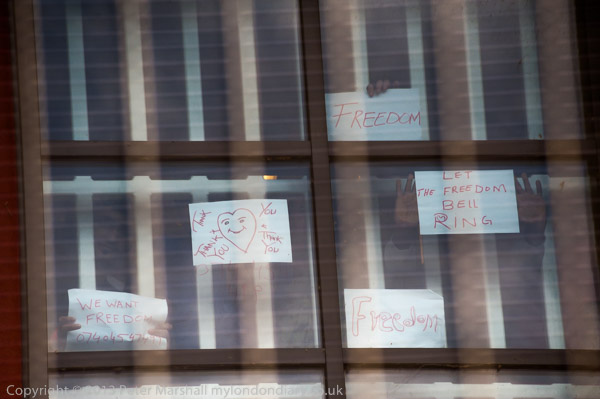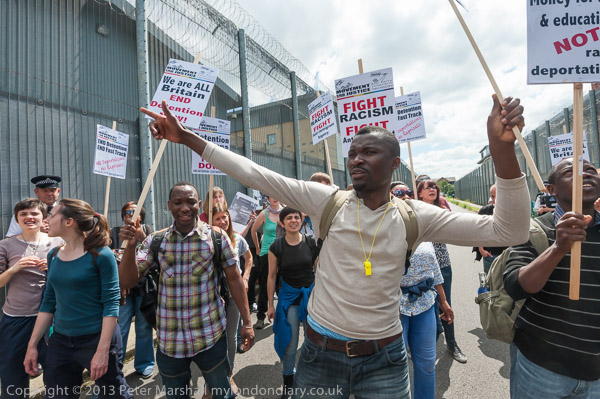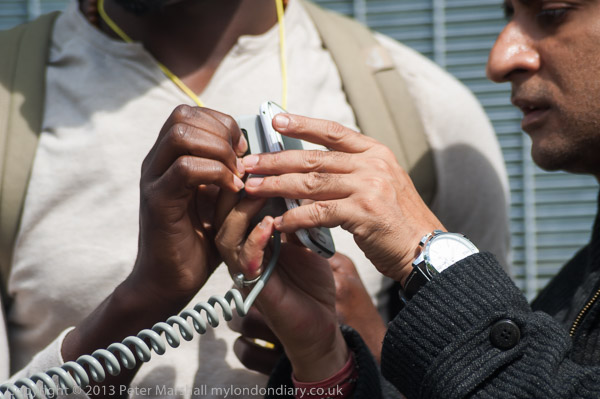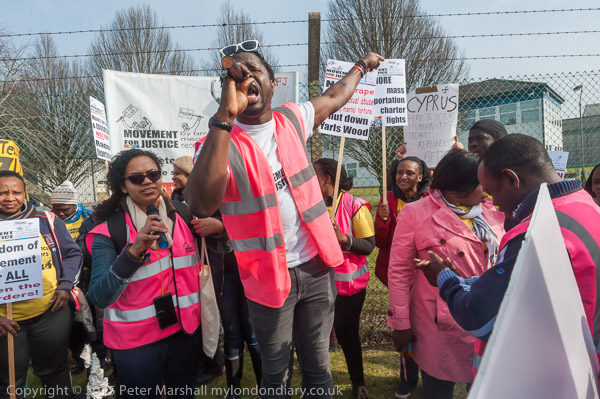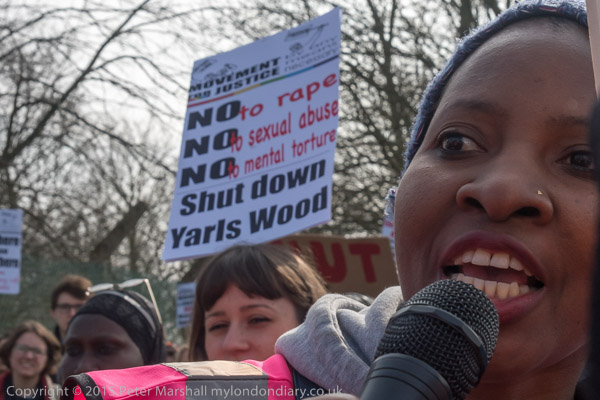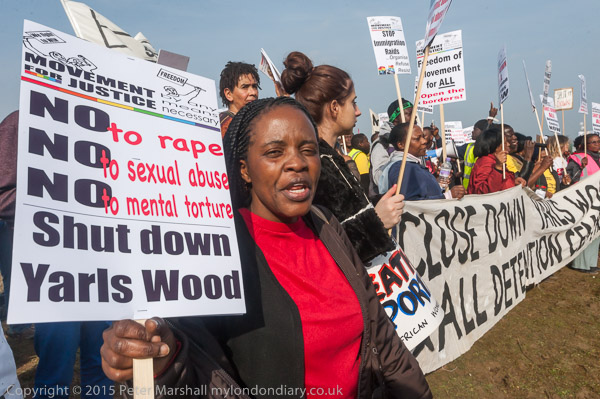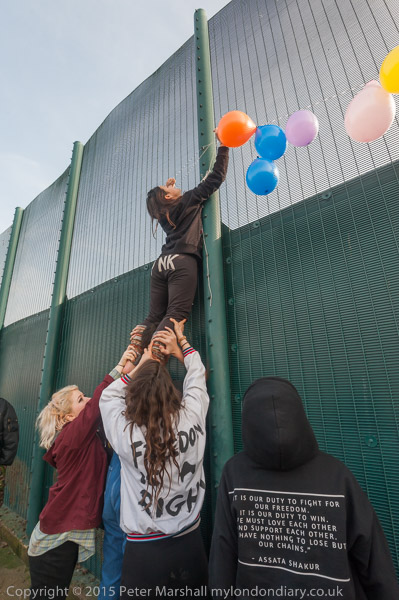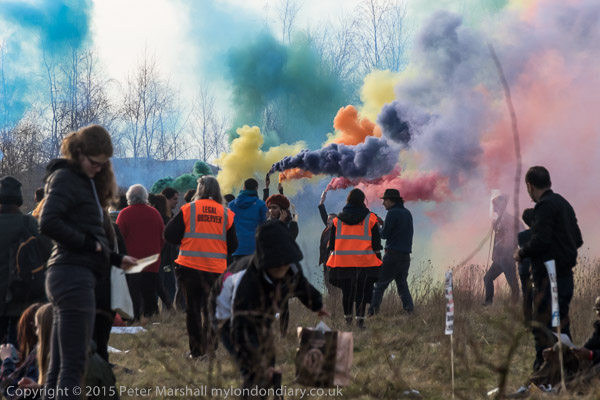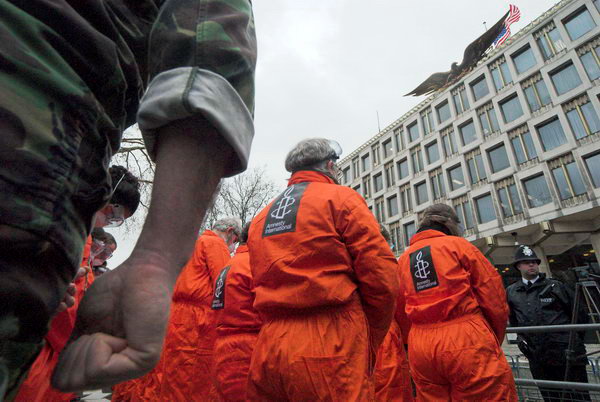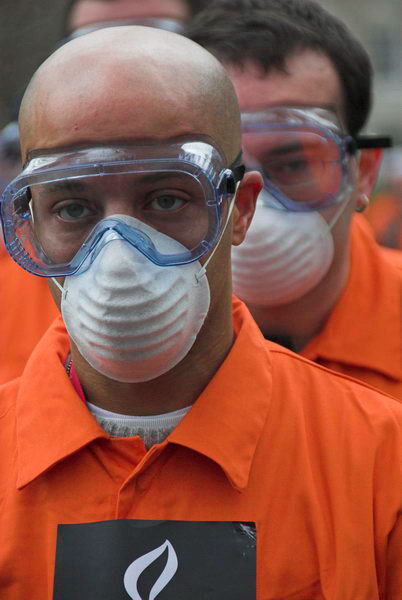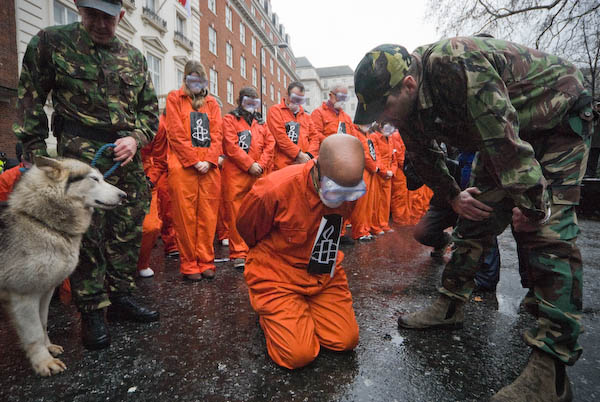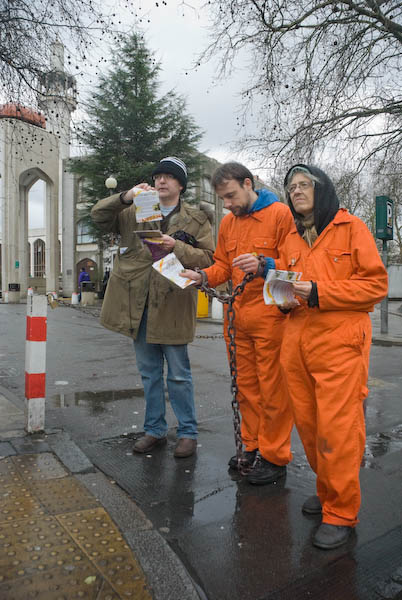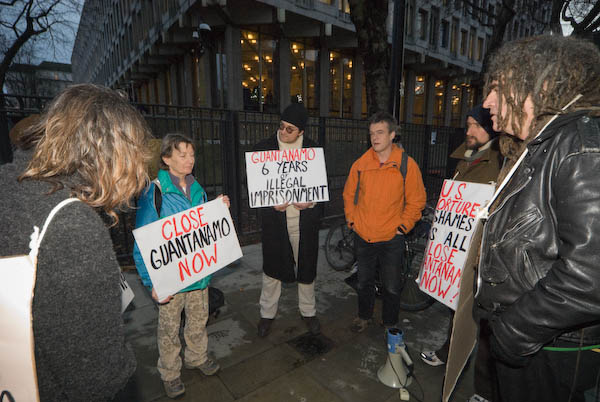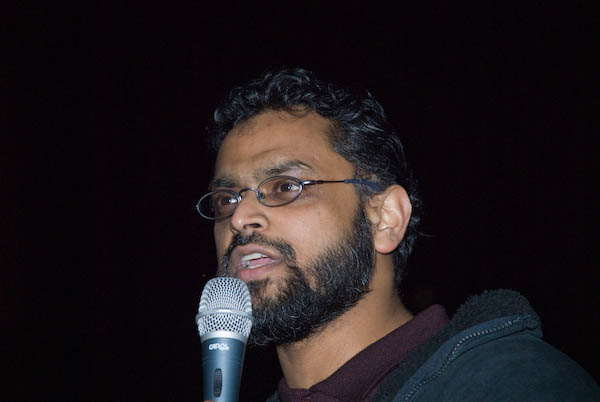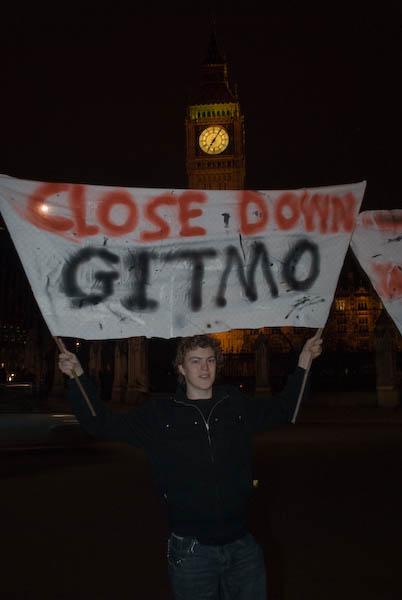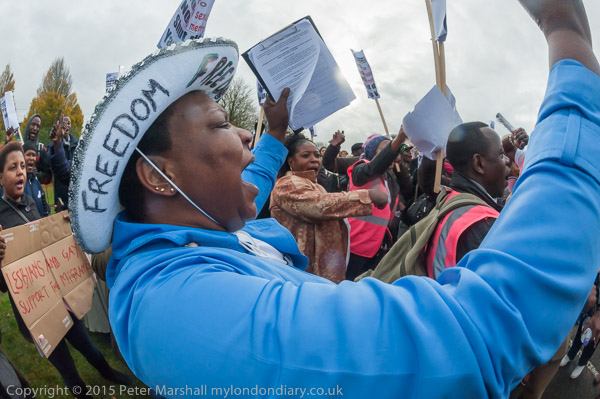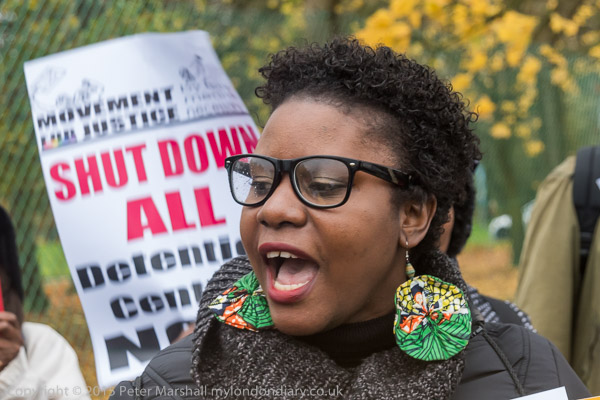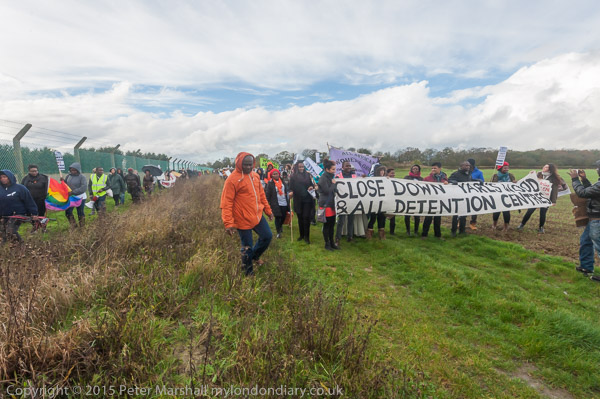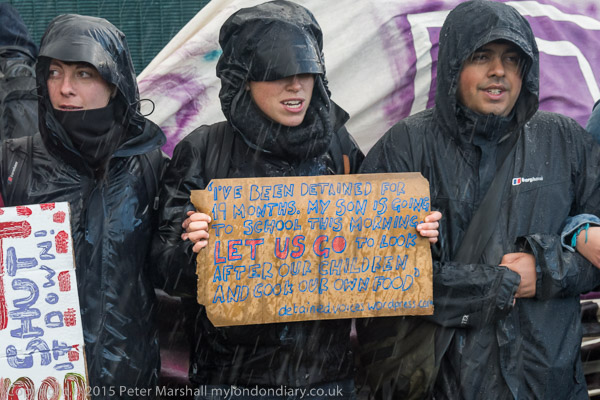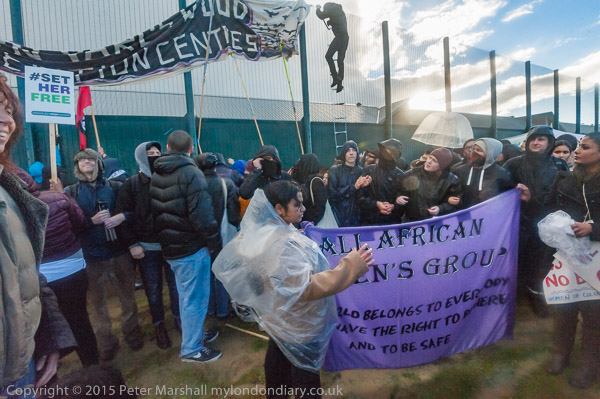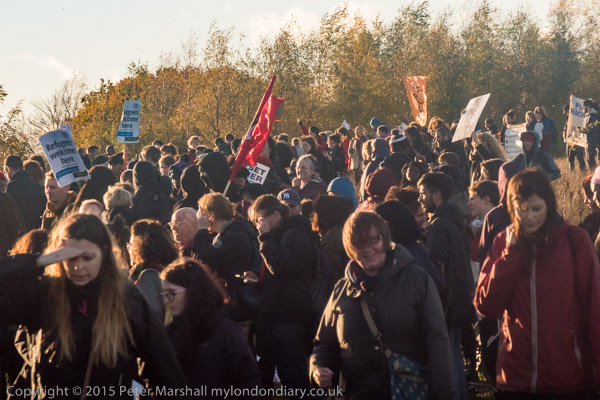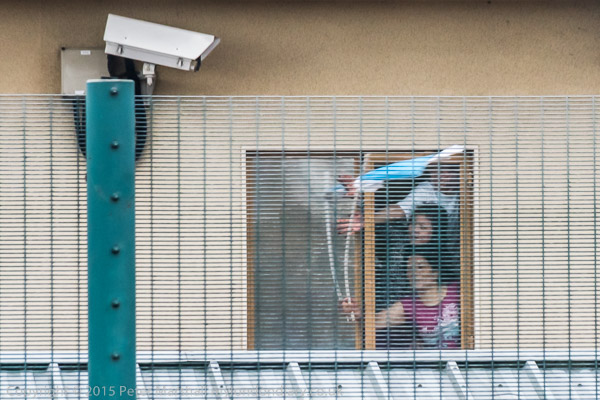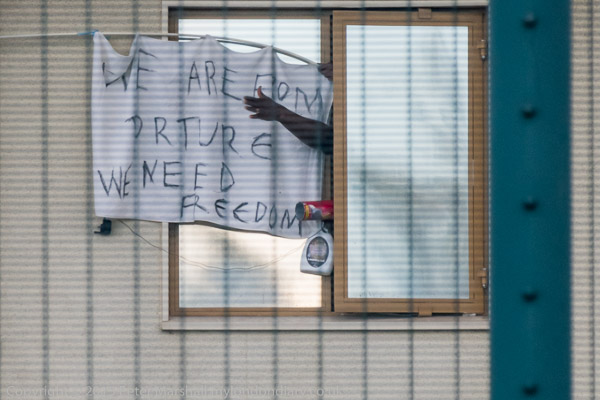Shut Down Racist Yarl’s Wood. On Saturday 12th March 2016, six years ago today, I made another visit to the immigration detention centre at Yarl’s Wood where the Movement for Justice (MfJ) had organised another large protest.
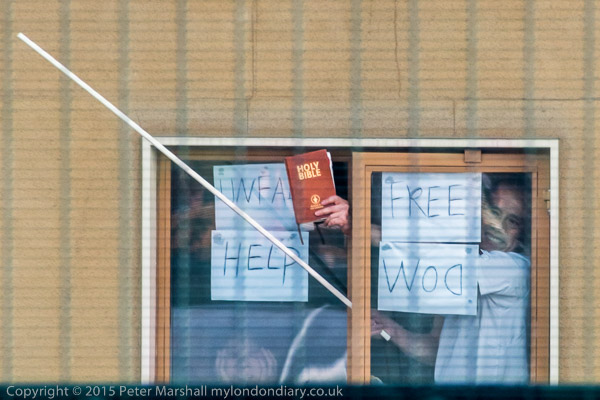
The Home Office no longer uses Yarl’s Wood to house large numbers of women asylum seekers, but unfortunately this does not mean their cruel and racist policies have changed. Women were at first moved out because of Covid, but Priti Patel has set up a new immigration prison, Derwentside Immigration Removal Centre, to hold 80 detainees to replace it, with around 88 women being moved and locked up there for Christmas 2021.
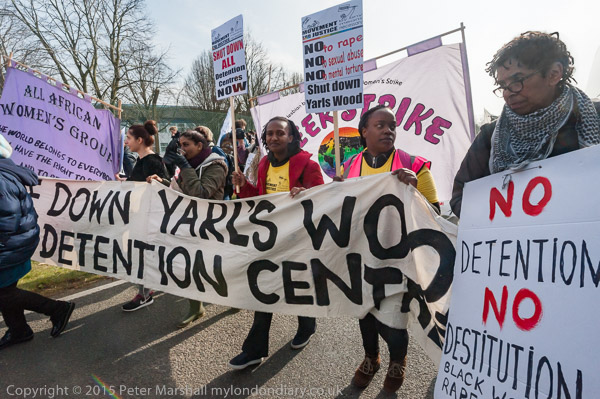
The new centre at Hassockfield is on the site of the notorious Medomsley Detention Centre, where over 1,800 young male detainees were abused in the 1960s to 1980s, and is at at Medomsley Edge, 13 miles NW of Durham, 1.7 miles North of Consett. It has been renamed again as Derwentside, to give it a more friendly image, though the river is around a mile away as the crow flies. Almost certainly the Home Office was fed up with the protests organised by MfJ and others at the already rather remote site at Yarl’s Wood, around 5 miles outside Bedford, and thought it a good idea to move it rather further away from London, where there are many former detainees and activists who came to demonstrations.
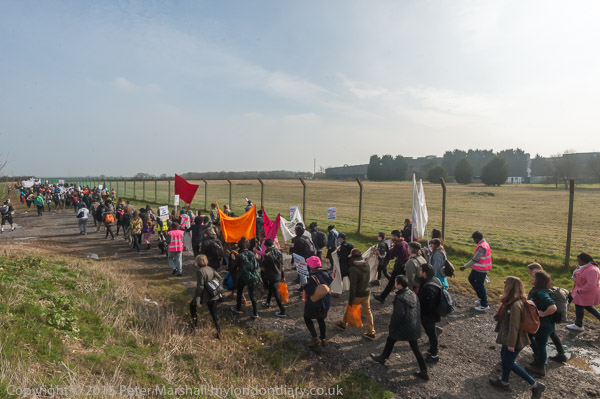
But of course people came from all over the country – including from Scotland – to Yarl’s Wood, and protests will continue, with an active ‘No to Hassockfield‘ local group at their centre, although it’s too far away for me to photograph them.
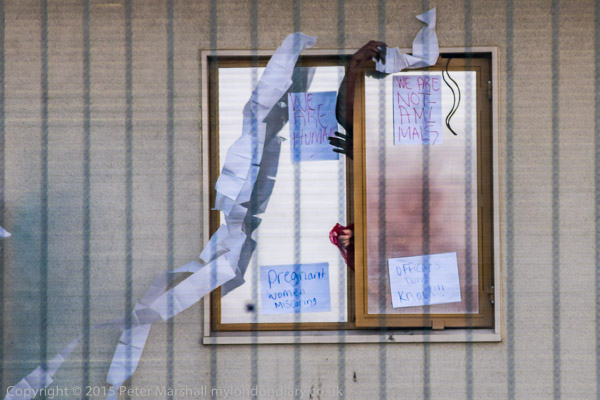
Hassockfield is so remote that the Home Office was unable to find law firms which would give satisfactory tenders to give legal advice there and abandoned the search – with detainees now only able to get advice by phone. Women for Refugee Women are calling for donations to mount a legal challenge over this lack of support. There is a great deal more information about the cruel and racist treatment of asylum seekers with many telling their own stories on their web site.
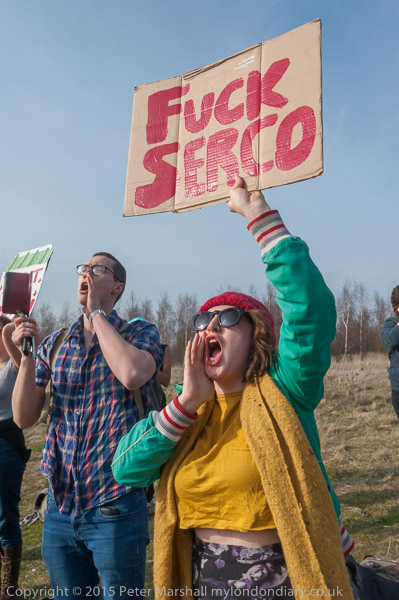
Back on 12th March 2016, my own journey to Yarl’s Wood didn’t go too well, with a train cancellation. But I still got to Bedford Station in a little over two hours and in time for the coach organised by MfJ to the meeting point at Twinwoods Business Park, around a mile walk from the prison. Unfortunately the coach driver didn’t know the way and police had put up large signs stating the road up from the A6 was closed (though in fact they were letting traffic to the protest to go through.) The result was a rather lengthy tour of the Bedfordshire countryside – with another wrong turning, meaning we arrived the best part of an hour late.
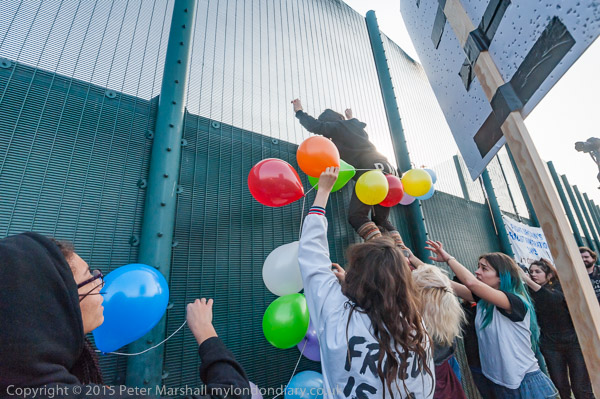
Fortunately the event had started with a rally on the road waiting for people from around the country to arrive, and the mile or so walk to the prison was waiting for us and only just about to begin.
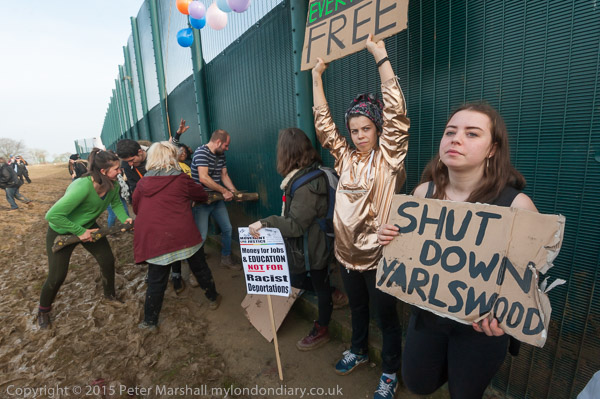
Fortunately it was a fine day for the walk, but there had been heavy rain in previous days and some of the footpath and the field beside the prison where the protest took place was full of mud and some puddles, making it hard to move about and keep my balance. As you can see in some pictures close to the fence it was a sticky mess.
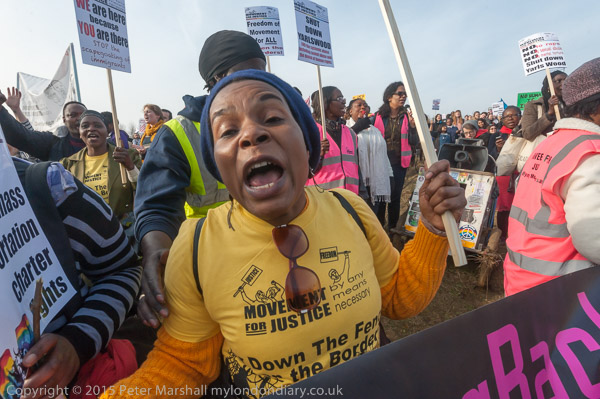
The field has a fairly steep slope up from the 20ft prison fence, which does enable protesters to see over the lower 10ft of thick metal sheeting and to glimpse the women waving, shouting and holding posters at the upper floor windows inside.
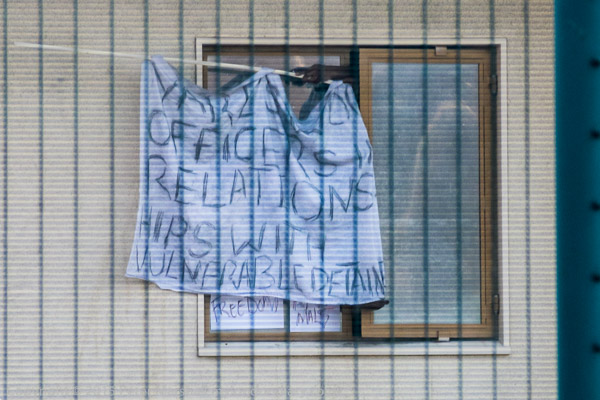
It is tricky taking pictures through the 10 ft upper section of the fence with its thick wire grid and I don’t have the kind of long and fast lenses for this. I actually declined the invitation from the organisers to photograph the first large MfJ protest here as I knew I didn’t really have the right gear, suggesting they invite a colleague. But for later protests I decided that there were many other pictures I could take and I could at least get some kind of pictures through that fence.
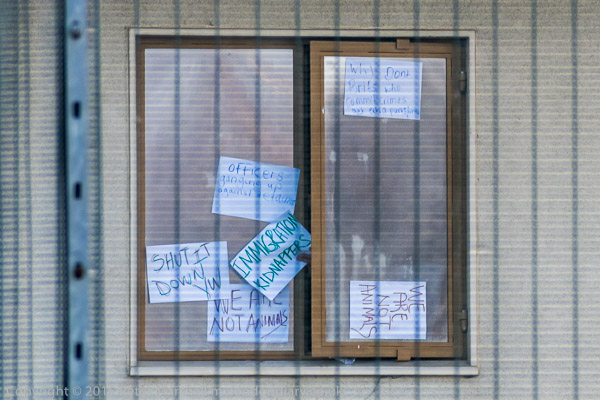
Many of those at the protest were people who had been locked up inside Yarl’s Wood or other detention centres, and almost all of those who spoke had stories to tell about how their mistreatment – having been physically and sexually assaulted, locked in rooms, denied medical assistance, unable to get proper legal advice and more. Most had come to this country fleeing from violence, often from rape and in dire need of care and understanding and instead were locked up, their stories disbelieved and further subjected to hostile and inhuman treatment.
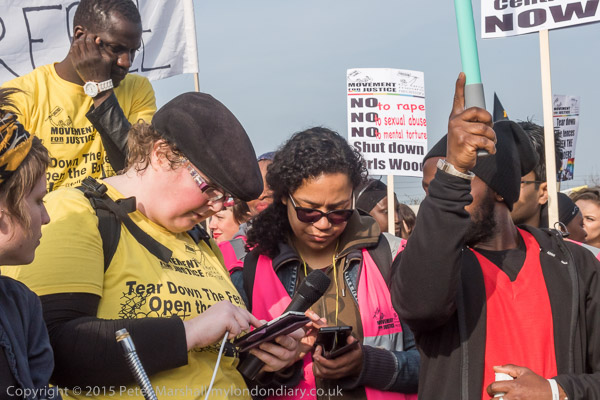
At the end of the protest people let off a number of coloured flares before the long walk back to the coaches. I was rather caught in the mud and unable to get close to where this was happening. On the path and road back to the coach I tried to scrape the worst of the mud from my boots and trousers on the grass and on the kerb of the road, and found some sticks to help, but Bedfordshire mud proved extremely persistent.
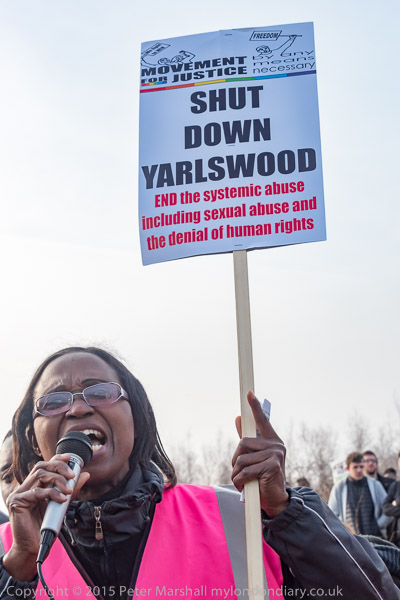
We needed to remove our boots before getting on the coach, and fortunately I had a plastic bag to put them in for the journey, getting back into them where we were dropped off at the station. The journey home was slow but uneventful and I was exhausted and needed a good meal and a bath when I arrived – but at least unlike those detainees I was free.
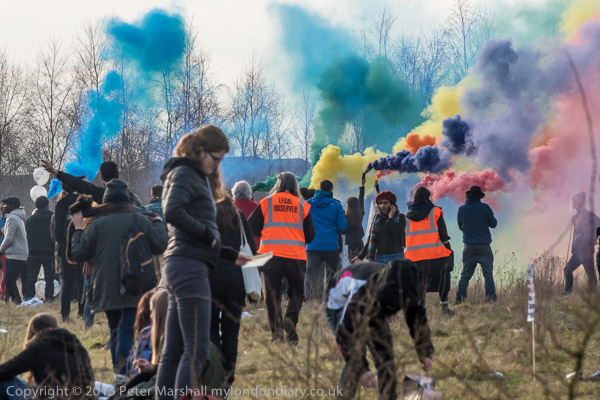
More at Shut Down Yarl’s Wood on My London Diary, where you can also find accounts of other protests at Yarl’s Wood as well as other immigration prisons at Harmondsworth and Colnbrook using the site search.
